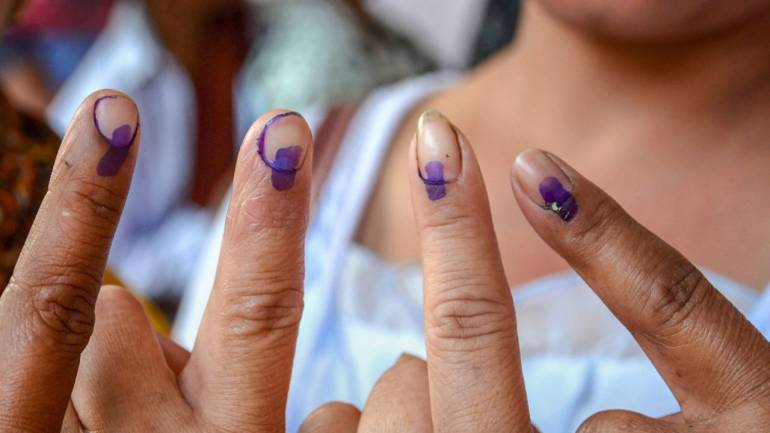Bihar’s Muzaffarpur district is known as the Litchi bowl of India but for three weeks it hit headlines for the wrong reasons. The Encephalitis epidemic in north Bihar districts made this fruit stand in the dock of questions labelling its consumption as a potential cause behind the deadly outbreak of encephalitis. Muzaffarpur district is considered to be the epicentre of this recent outbreak.
What is Litchi?
Litchi is an important fruit crop of the country with tremendous domestic market and export potential. it contributes significantly to the growers’ economy in Bihar, West Bengal, Assam and Jharkhand which accounts for 78% of the total production in the country. Bihar produces 40% of total litchi and occupies nearly 38% of the litchi’s area under cultivation in India.
Muzaffarpur accounts for 12,000 hectares of production area. From here litchi gets transported to cities like Patna, Luckhnow, Gorakpur, Delhi, Kolkata, Mumbai, etc that shows the growing demand of the annual fruit.
Litchi is called the “Queen of Fruits” and has been consumed for 2000 years now with its origin in China, spreading to South East Asia and entering Indian subcontinent in the late 17th century. On the global map it can be found in Bangladesh, Vietnam, Brazil, Mauritius, Australia, New Zealand and South Africa.
Litchi-AES connection debate
The debate has two facets. One that of T Jacob John, a retired professor of virology from Christian Medical College (CMC) Vellore who investigated the disease in Muzaffarpur during its outbreak in 2012, 2013 and 2014. His inference pointed out that the disease broke out during the months when the litchi was harvested, i.e. April, May and June and the fruit contains a chemical substance named methylene cyclopropyl glycine (MCPG) which blocks a biochemical process called fatty acid oxidation.
On contrary to these findings, reports linking the death of children in Muzaffarpur and other districts due to Acute Encephalitis Syndrome (AES) to nutritious fruit of Litchi, an annual fruit that Muzaffarpur leads in production has not gone well with scientists who have been working on it since decades. The National Research Centre on Litchi (NCRL) based in outskirts of Muzaffarpur city has rejected the theory of litchi to be a disease causative agent.
In an exclusive interview to Newsd, the Director of the National Research Centre on Litchi Dr Vishal Nath said, “There is no connection between the outbreak of encephalitis and litchi. From Muzaffarpur, this fruit gets transported to big cities of India like Mumbai, Delhi, etc. How come a harmful product is being consumed by consumers, nationwide? It is a nutritious fruit as it contains vitamin B, calcium, iron, potassium, phosphorus, minerals, etc. In 11 years of my experience at Muzaffarpur based research centre, I did not come across any side effect of the fruit.”
Dr Nath further explained that Methyl Cyclopropyl Glycine (MCPG) is a transformed amino acid which is found in the seed of the fruit in traces and not in fruit pulp. So why anyone would feed on litchi seeds alone and in how much quantity?
There are claims that after eating the fruit children had to face the loss of glucose. It cannot happen after having litchi as it contains sugar in it, added Dr Nath. It is sad to see propaganda revolving around a fruit which is harmless and is tarnishing its image whose production and supply add to state revenue and reputation.
Besides argument of NCRL scientist, official records of Shri Krishna Medical College and Hospital (SKMCH) spell altogether a different story ridiculing the link of litchi and disease. This year the first AES case to SKMCH was of Guddu Kumar from Katra block of Muzaffarpur dated 25th January. Mahera Yaaz of Sitamarhi was admitted to SKMCH on 5th March, Shoehar’s Abdul Halal on 17thApril, Birju Kumar of Aurai on 22nd April and Nikki Kumari of Sitamarhi on 27th April.
In month of February/March litchi flowering takes place and it gets ripe in May. Only after May-mid, litchi becomes edible. By the end of the month of June, litchi fruit plucking gets over but on contrary, cases of AES are still coming in to notice when there is no litchi fruit on trees. These sequential events delink the litchi and epidemic connection.
Dr Gopal Shankar Sahni, who heads the paediatrics department at Muzaffarpur’s Shri Krishna Medical College and Hospital said- if litchi were behind the deaths then it would have affected children in all litchi-growing regions and not be limited to Muzaffarpur and its surrounding areas.
So it can be grossly misleading to conclude that litchi consumption has led to the death of children. But yes malnutrition or undernourishment in rural children, high temperature with high humidity are factors behind the death of children.
Nitish Kumar government in Bihar issued an advisory asking parents not to give their children litchi in an empty stomach. Also, Bihar State Health Society has issued pamphlets advising parents to warn children not to eat unripe or half-ripe litchi. The death toll of children affected from AES has risen to 129.





















